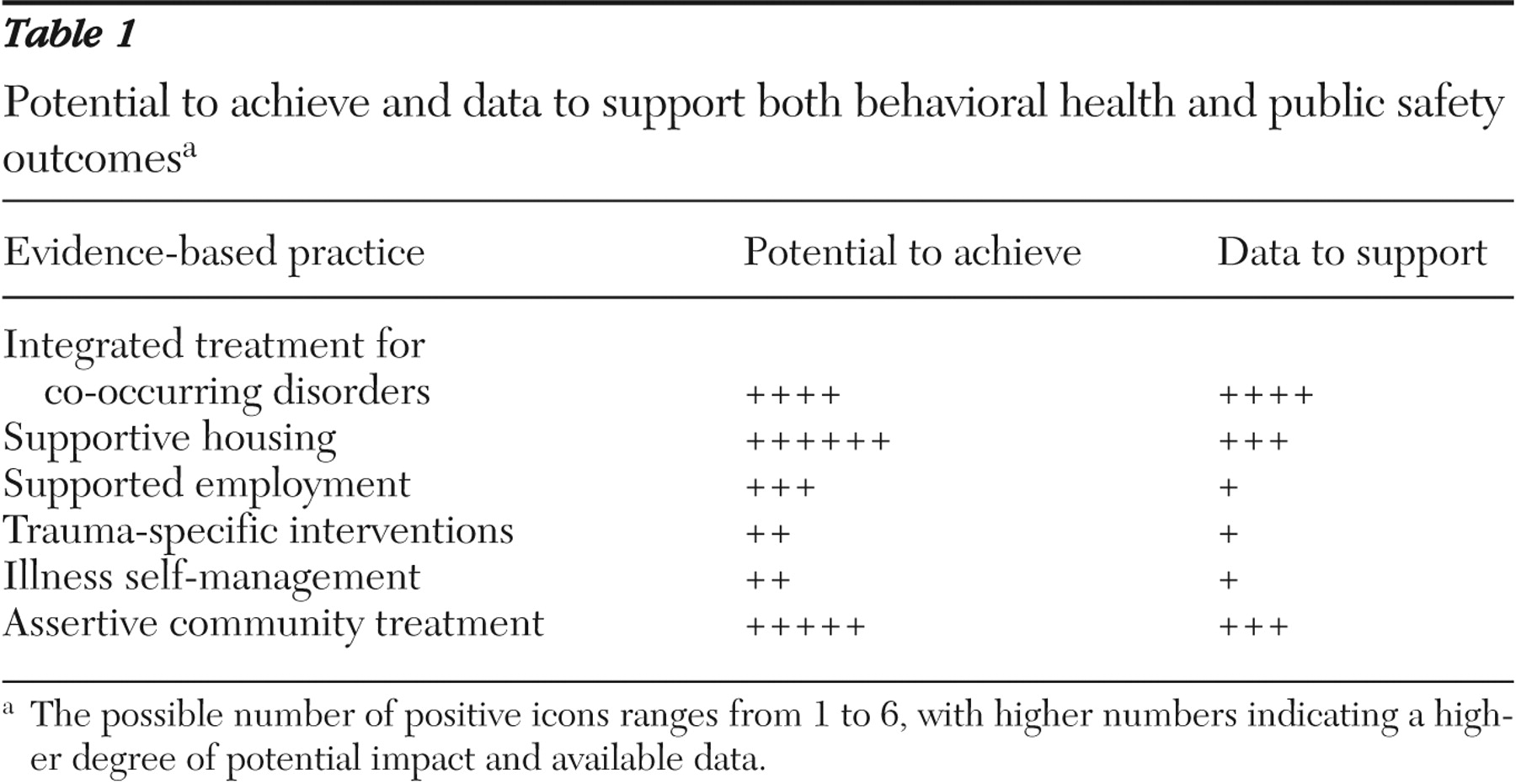Adapting Evidence-Based Practices for Persons With Mental Illness Involved With the Criminal Justice System
Factors affecting the delivery of evidence-based practices
Co-occurring substance use disorders
Sociodemographic factors
Trauma exposure
Criminal charges
Legal factors: the unique role of coercion
Expert panel meetings
Expert panel findings
Integrated mental health and substance abuse services
Supportive housing
Trauma-specific interventions
Supported employment
Illness management and recovery
Assertive community treatment
Need for adaptation

Acknowledgments and disclosures
Footnote
References
Information & Authors
Information
Published In
History
Authors
Metrics & Citations
Metrics
Citations
Export Citations
If you have the appropriate software installed, you can download article citation data to the citation manager of your choice. Simply select your manager software from the list below and click Download.
For more information or tips please see 'Downloading to a citation manager' in the Help menu.
View Options
View options
PDF/EPUB
View PDF/EPUBLogin options
Already a subscriber? Access your subscription through your login credentials or your institution for full access to this article.
Personal login Institutional Login Open Athens loginNot a subscriber?
PsychiatryOnline subscription options offer access to the DSM-5-TR® library, books, journals, CME, and patient resources. This all-in-one virtual library provides psychiatrists and mental health professionals with key resources for diagnosis, treatment, research, and professional development.
Need more help? PsychiatryOnline Customer Service may be reached by emailing [email protected] or by calling 800-368-5777 (in the U.S.) or 703-907-7322 (outside the U.S.).

